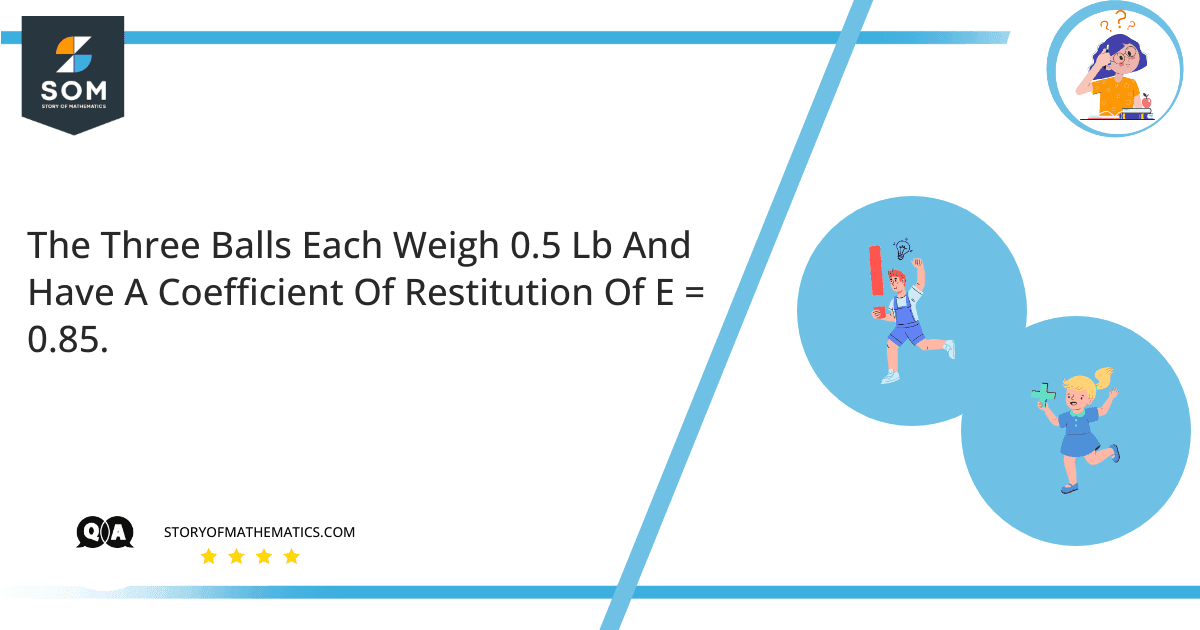
The aim of this question is to find the change in speed of two bodies after collision by utilizing the concept of elastic collisions.
Whenever two bodies collide, their momentum and energy remain constant as per the energy and momentum conservation laws. Based on these laws we derive the concept of elastic collisions where the friction is ignored.
During elastic collisions the speed of two bodies after the collision can be determined by the following formula:
\[ v’_B \ = \dfrac{ 2m_A }{ m_A + m_B } v_A – \dfrac{ m_A – m_B }{ m_A + m_B } v_B \]
\[ v’_A \ = \dfrac{ m_A – m_B }{ m_A + m_B } v_A + \dfrac{ 2 m_B }{ m_A + m_B } v_B \]
Where $ v’_A $ and $ v’_B $ are the final speeds after collision, $ v_A $ and $ v_B $ are the speeds before collision, and $ m_A $ and $ m_B $ are the masses of the colliding bodies.
If we consider a special case of elastic collision such that both the bodies have equal mass ( i.e. $ m_A \ = \ m_B \ = \ m), the above equations reduce to:
\[ v’_B \ = \dfrac{ 2m }{ m + m } v_A – \dfrac{ m – m }{ m + m } v_B \]
\[ v’_A \ = \dfrac{ m – m }{ m_A + m_B } v_A + \dfrac{ 2 m }{ m + m } v_B \]
The above equations further reduce to:
\[ v’_B \ = v_A \]
\[ v’_A \ = v_B \]
Which means that whenever two equally massed bodies collide, they exchange their speeds.
Expert Answer
Given:
\[ m \ = \ 0.5 \ lb \ = \ 0.5 \times 0.453592 \ kg \ = \ 0.23 \ kg \]
Part (a) – Downward movement of mass A.
Total Energy of mass A at the top:
\[ TE_{top} \ = \ KE_A + PE_A \]
\[ TE_{top} \ = \ \dfrac{ 1 }{ 2 } m v_A^2 + m g h \]
\[ TE_{top} \ = \ \dfrac{ 1 }{ 2 } (0.23) (0)^2 + (0.23) (9.8) (3) \]
\[ TE_{top} \ = \ 6.762 \]
Total Energy of mass A at the bottom:
\[ TE_{bottom} \ = \ KE_A + PE_A \]
\[ TE_{bottom} \ = \ \dfrac{ 1 }{ 2 } m v_A^2 + m g h \]
\[ TE_{bottom} \ = \ \dfrac{ 1 }{ 2 } (0.23) v_A^2 + (0.23) (9.8) (0) \]
\[ TE_{bottom} \ = \ 0.115 v_A^2 \]
From the energy conservation law:
\[ TE_{bottom} \ = \ TE_{top} \]
\[ 0.115 v_A^2 \ = \ 6.762 \]
\[ v_A^2 \ = \dfrac{ 6.762 }{ 0.115 } \]
\[ v_A^2 \ = 58.8 \]
\[ v_A \ = 7.67 \ m/s \]
Part (b) – Collision of mass A with mass B.
Speeds before collision:
\[ v_A \ = 7.67 \ m/s \]
\[ v_B \ = 0 \ m/s \]
Speeds after collision (as derived above):
\[ v’_B \ = v_A \]
\[ v’_A \ = v_B \]
Substituting values:
\[ v’_B \ = 7.67 \ m/s \]
\[ v’_A \ = 0 \ m/s \]
Part (c) – Collision of mass B with mass C.
Speeds before collision:
\[ v_B \ = 7.67 \ m/s \]
\[ v_C \ = 0 \ m/s \]
Speeds after collision (similar to part b):
\[ v’_C \ = v_B \]
\[ v’_B \ = v_C \]
Substituting values:
\[ v’_C \ = 7.67 \ m/s \]
\[ v’_B \ = 0 \ m/s \]
Numerical Result
After the second collision:
\[ v’_A \ = 0 \ m/s \]
\[ v’_B \ = 0 \ m/s \]
\[ v’_C \ = 7.67 \ m/s \]
Example
Suppose two bodies of mass 2kg and 4 kg have speeds of 1 m/s and 2 m/s. If they collide, what will be their final speeds after the collision.
Speed of first body:
\[ v’_A \ = \dfrac{ m_A – m_B }{ m_A + m_B } v_A + \dfrac{ 2 m_B }{ m_A + m_B } v_B \]
\[ v’_A \ = \dfrac{ 2 – 4 }{ 2 + 4 } ( 1 ) + \dfrac{ 2 ( 4 ) }{ 2 + 4 } ( 2 ) \]
\[ v’_A \ = \dfrac{ -2 }{ 6 } + \dfrac{ 16 }{ 6 } \]
\[ v’_A \ = 2.33 \ m/s \]
Similarly:
\[ v’_B \ = \dfrac{ 2m_A }{ m_A + m_B } v_A – \dfrac{ m_A – m_B }{ m_A + m_B } v_B \]
\[ v’_B \ = \dfrac{ 2 ( 2 ) }{ 2 + 4 } ( 1 ) – \dfrac{ 2 – 4 }{ 2 + 4 } ( 2 ) \]
\[ v’_B \ = \dfrac{ 4 }{ 6 } + \dfrac{ 4 }{ 6 } \]
\[ v’_B \ = 1.33 \ m/s \]
